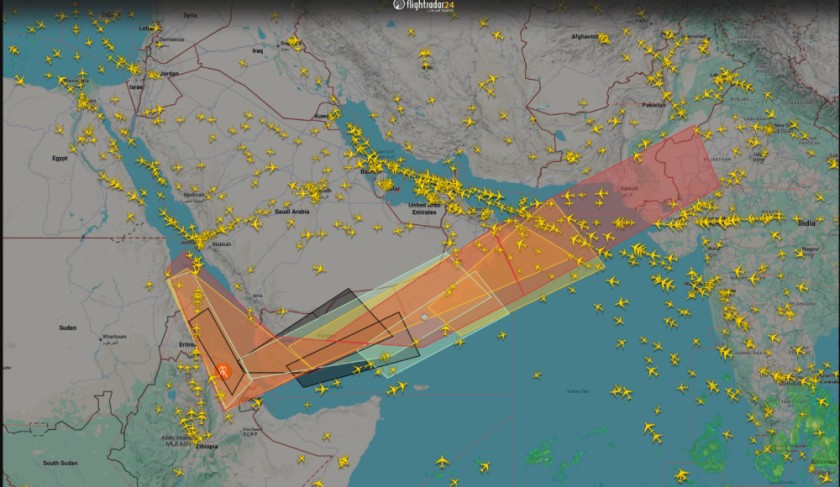Ethiopian volcano erupts, EA monitoring air quality in Oman
The Hayli Gubbi volcano in northeastern Ethiopia violently awoke on Monday, November 24, marking its first time of its explosion as the peak has no known history of eruption in the past.
Some reports suggested that the plume has been drifting eastward over the Red Sea, affecting parts of southwestern Arabia, including Yemen and Oman.
The Environment Authority, in a statement, said it is closely monitoring developments in emissions resulting from the eruption of Hayli Gubbi Volcano in Ethiopia, to safeguard public health and air quality across the Sultanate’s governorates.
The Authority, through 68 monitoring stations distributed across the Sultanate’s governorates, including 8 stations in Dhofar and 5 in Al Wusta, is continuously monitoring pollutant concentrations around the clock.
It also confirmed that no increases in pollutant concentrations have been recorded so far within the Sultanate, and there are no indications that air quality has been affected by the volcanic emissions.
The public can follow the indicator in real time via the “Naqi” air quality monitoring platform. The relevant authorities will continue monitoring, and any updates will be announced as necessary.
The eruption started at approximately 8:30 (local time) and is considered the first recorded activity at the volcano in potentially thousands of years.
The peak is located in the remote region of Danakil, where the eruption was initially confirmed via satellite data.


The main source of information is satellite data.
There are no known eruptions on record from the Hayli Gubbi in the past several thousand years, which could mean it erupted after a potentially very long repose interval; however, records from the Danakil region are often incomplete, and geologic studies are very limited due to the remoteness and harsh conditions in one of the most inhospitable areas of the world.
Analysts who continuously monitored the event reported a massive ash plume that soared to estimated altitudes of 13 to 15 kilometers (Approximately 45,000 feet).
Professor Simon Carn, a volcanologist, confirmed the eruption via satellite imagery, reporting a major release of sulfur dioxide (SO2).
SO2 is a primary indicator of explosive volcanic activity and is released when magma is close to the surface and during eruptions.
Increased levels of SO2 indicate an impending eruption, which can also lead to the formation of volcanic smog.
The Toulouse Volcanic Ash Advisory Center (VAAC) has issued advisories for aircraft, tracking the ash as it spreads in the neighbouring areas.
Hayli Gubbi is a shield volcano located in the Afar region of Ethiopia and is the southernmost volcano of the Erta Ale Range.
Although it is located in the highly active volcanic region, its own history has been one of silence.
Geological records indicate that the volcano has not erupted throughout the entire Holocene period, i.e., the last 10,000 years, making this event highly significant.



